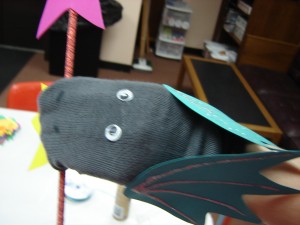 This meeting was a little tricky, because these two books have pretty much nothing in common. Why did we read them both, you ask? Oh, the trials and tribulations of having kids with wildly divergent reading tastes!
This meeting was a little tricky, because these two books have pretty much nothing in common. Why did we read them both, you ask? Oh, the trials and tribulations of having kids with wildly divergent reading tastes!
A few times a year, I booktalk a few options to the kids and have them vote on what they’d like to read. There are usually some choices that are universally popular – we always want to read the latest Wimpy Kid book – and a few total flops. In our last voting session, something new happened: we had two books that were EXTREMELY popular with half the kids, and EXTREMELY unpopular with the other half. (Example: I have them write in their rankings from 1 (most want to read) to 8 (least want to read) and I had one girl write “800 TRILLION” underneath Gregor. Ouch.) Usually we get a combination of popular and neutral, or totally neutral, or totally unpopular, all of which are easier to deal with. This time, though, I had two groups of kids who would be seriously disappointed if I didn’t choose their favorite option.
So I chose both.
At the time, this seemed like a great idea. Everyone wins!
 …not so much.
…not so much.
I hadn’t considered the logistics of actually running a meeting where the kids were discussing totally different books. At first I thought about breaking the kids into two groups and appointing one kid from each group as a discussion leader, but I’m not that optimistic. Discussions derail quickly enough when I’m the one moderating. Then I considered making each group write a booktalk to convince the other group to read their book. This worried me a little: since I never know who’s going to show up to a given meeting, I couldn’t be sure that each group would have kids who are comfortable writing and presenting. So what’s a tween librarian to do?
A trivia contest, of course! I love trivia contests for a lot of reasons:
1. They allow kids to participate as much or as little as they want to (provided you’re playing in groups, which I always do).
2. Success requires the kids to have actually read the book.
3. Everyone loves a little healthy competition! (Well, almost everyone. More on that later.)
When the tweens arrived, they split into teams. Because (miraculously) all of the kids had finished their books, I did end up having both teams summarize their books. It went better than expected, though I’m not sure anyone was convinced to read the other book. We then went on to the trivia contest, which the Gregor team won overwhelmingly. (Really overwhelmingly.)
The best part of the meeting, though, was something I’ve never tried before. We’ve gotten tons of new middle-grade books in the last few weeks, and they haven’t been getting as much attention as I’d like – our “new book” shelf is sort of hidden in the back of the room. I brought a bunch of the new books upstairs, then had each kid pick a book. They had five minutes to read the summary of the book and skim its contents (looking for illustrations, size of type, length of chapters, etc.), after which they each presented their book to the group. They actually seemed to enjoy doing it, and all of the books except one were checked out by a book club member, so I’m counting that as a success.






